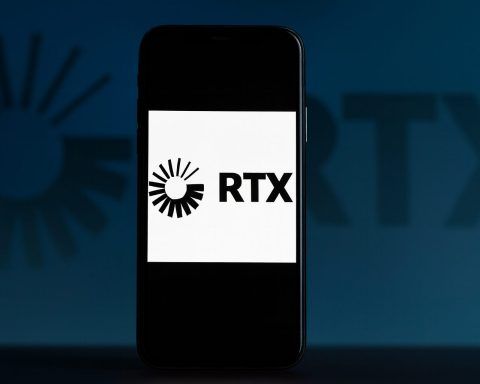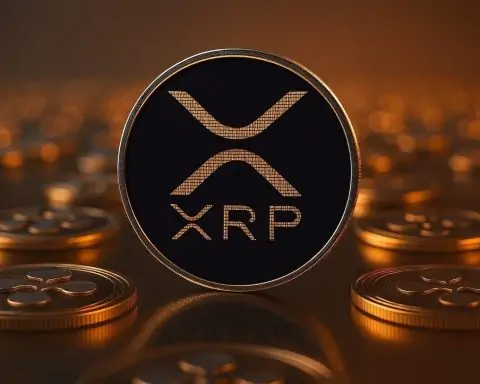- SOL Price (Nov 3, 2025): Around $166 per coin, after a sharp drop of roughly 20% over the past week [1]. Solana had hit a year-to-date peak near $293 in January 2025, solidifying its status as the 6th largest crypto by market cap at the time [2].
- Market Metrics: At ~$166, Solana’s market capitalization stands near $86–87 billion, with 24-hour trading volumes around $9–10 billion [3]. SOL remains a top-tier crypto asset (rank ~#6 by market cap), despite recent losses.
- Recent Slide: Solana’s price plunged ~11% on Nov 3 alone, extending a week-long correction. It fell from about $205 in late October to the mid-$160s [4]. This decline coincided with a broader crypto pullback – for context, Bitcoin fell ~6% and Ethereum ~12% in the same week [5].
- ETF Launch & Inflows: Paradoxically, the sell-off came just as the first U.S. spot Solana ETFs debuted with surging demand. Two new Solana funds (Bitwise’s BSOL and Grayscale’s GSOL) attracted roughly $421 million in their first week [6] [7]. Bitwise’s product alone saw $199 million of fresh inflows, outperforming even new Bitcoin ETFs, yet SOL’s price still slumped.
- Key News Drivers: Analysts say broader risk-off sentiment and crypto market turmoil outweighed the positive ETF news [8] [9]. Investors have been nervous about macroeconomic uncertainties (e.g. policy reversals, stock market volatility), leading to profit-taking in altcoins. Massive liquidations hit SOL as it dropped, doubling its weekly loss to ~17% at one point [10].
- Strong Fundamentals: Despite price volatility, Solana’s network fundamentals remain robust. The blockchain’s annualized revenue recently hit $2.85 billion, and usage is growing fast [11]. Solana’s ultra-low fees and high throughput continue to draw developers and users in DeFi, NFTs, gaming, and payments [12] [13]. Even Western Union is building a stablecoin on Solana for global remittances [14] – a sign of real-world adoption.
- Technical Outlook: SOL has broken below key support levels and its 200-day moving average (~$180). Chart analysts are eyeing the $150–$157 zone as a critical support (a Fibonacci retracement area) where buyers may step in [15]. If that floor fails, downside targets include ~$142 or even $130 [16] [17]. On the upside, bulls need to reclaim $188–$200 to flip momentum positive; a confirmed break above ~$210 could signal a fresh rally toward the mid-$200s [18] [19].
- Future Forecasts: Market experts diverge on SOL’s next moves. Some forecasts see Solana recovering to ~$250 by end-2025 if the crypto market stabilizes [20]. Long-term, optimistic models even envision new highs (e.g. ~$336+ in 2025) given Solana’s growth trajectory [21]. However, failure to regain the $200 level soon could trigger a deeper retreat into the low $100s, according to technical analysts [22]. In brief, Solana’s outlook depends on whether buyers return to support the recent dip or if bearish sentiment persists into the winter.
SOL Price Overview (Early November 2025)
As of November 3, 2025, Solana (SOL) is trading around $165–$170, having experienced a steep drop at the start of the month. On that day, SOL plunged roughly 11% in 24 hours, falling from the high-$180s to the mid-$160s [23]. This one-day slide capped off a week of declines: just a week prior, Solana was changing hands above $200, meaning SOL has shed about 20% of its value over seven days [24]. The pullback is notable given Solana’s strong rally earlier in the year – the coin hit a year-to-date high near $293 on January 19, 2025 (a new all-time high for SOL) [25].
Despite the recent correction, Solana remains one of the largest crypto assets. Its market capitalization at the current price is approximately $86–$87 billion, which still places it around 6th in global crypto rankings by market cap [26] [27]. Daily trading volumes in early November have been elevated (on the order of $10 billion in 24-hour volume) as traders react to the volatility [28]. In other words, a lot of money is changing hands in SOL as the market seeks a new equilibrium after this price shock.
The broader context is that crypto markets as a whole turned south in late October and early November. Even as Solana tumbled, Bitcoin also slid to about $104,000 (down ~6% on the week) and Ethereum dropped to ~$3,500 (down ~12%) [29]. So, Solana’s decline, while steep, occurred during a general market pullback – albeit SOL’s drop was more severe than Bitcoin’s, reflecting higher volatility typical of altcoins. Traders note that Solana had outperformed many assets earlier in the year, so some of this downturn may be healthy profit-taking and consolidation after SOL’s meteoric rise of previous months [30] [31].
Recent Price Movements and Market Context
In the days leading up to November 3, Solana’s price was fluctuating around the upper $180s, then suddenly broke down. Over the Halloween weekend (Oct 31 – Nov 1), SOL hovered near $186–$188 with relatively low volatility [32]. However, as the new week began, selling pressure intensified. On Monday, Nov 3, SOL opened near $188 but swiftly fell below $170, catching many traders off guard [33]. By the end of that day, Solana was roughly 11.6% lower than its morning price, a significant single-day move [34].
What caused this abrupt slide? Market analysts point to a combination of factors. First, macroeconomic jitters and risk-off sentiment hit risk assets broadly. Reports noted a “broader risk-off sentiment across global markets” that coincided with Solana’s slump [35]. Investors have been grappling with various uncertainties – from potential changes in U.S. trade policy to ongoing geopolitical tensions – which can dampen appetite for volatile assets like crypto [36]. In late October, there were signals that equity markets were under pressure (a falling S&P 500/Nasdaq, rising bond yields, etc.), contributing to a cautious mood among crypto traders as well. In short, many investors started trimming exposure to riskier altcoins, and SOL was no exception.
Second, Solana’s drop appears to have been exacerbated by technical trading factors and liquidations. Once SOL broke below key support levels (around $180–$178), it likely triggered stop-loss orders and forced liquidations of leveraged positions. One report noted that Solana’s decline “doubles its weekly loss to nearly 17%” as liquidation activity picked up [37]. This suggests a cascading effect: initial selling led to more sell orders (from traders getting margin-called or stopped out), accelerating the fall. Such volatility isn’t uncommon in crypto, especially after a strong run-up – Solana had been trading as high as $220 just a few weeks prior, so there were plenty of late buyers whose positions turned underwater when the tide reversed.
It’s also important to note that Solana’s slide came despite seemingly positive news in its own ecosystem. This disconnect between fundamentals/news and price (at least in the short term) has puzzled some observers. The most striking example is the launch of Solana exchange-traded funds (ETFs) in the U.S., which by all accounts was a successful debut – yet SOL’s price dropped in the same timeframe. This paradox is explored in the next section.
Breaking News: ETF Debut – Big Inflows, But Price Drops
One of the biggest headlines in late October 2025 was the launch of the first U.S. spot Solana ETFs. This development was highly anticipated, as it potentially opens Solana up to a wave of institutional and mainstream investment. Two products went live: the Bitwise Solana ETF (ticker: BSOL) and Grayscale’s Solana Trust (GSOL), which was converted into an ETF-like vehicle. The inflows were massive – in fact, Solana ETFs saw some of the strongest initial demand ever for a crypto fund:
- In their first week, Solana-focused exchange-traded products saw roughly $421 million in net inflows [38] [39]. Bitwise’s new Solana fund attracted the lion’s share, about $199 million in fresh capital, on top of ~$223 million in seed investments [40].
- This made BSOL the top-performing crypto ETF of the week, surpassing even BlackRock’s Bitcoin fund in new money raised [41]. Grayscale’s Solana fund saw more modest new inflows (~$2.2 million), but it started out with over $100 million in assets from its prior trust format [42].
Analysts universally described the Solana ETF launch as “very solid” and a clear success given the circumstances [43]. Vetle Lunde, head of research at K33, noted that “the launch of U.S. spot Solana ETFs has been a clear success, drawing strong investor demand despite broader crypto fund outflows.” [44] In other words, while Bitcoin and Ethereum ETFs were seeing heavy outflows (investors pulled about $187M from BTC funds and $136M from ETH funds in the same period) [45], Solana’s new funds bucked the trend with net inflows [46] [47]. This signals a rotation by some institutional players toward Solana as an alternative Layer-1 investment, at least for now.
Why, then, did SOL’s price not surge on this ostensibly bullish news? There are a few interpretations:
- “Buy the rumor, sell the news” effect: Solana’s price had rallied strongly in the weeks before the ETF launch, possibly in anticipation of the positive news. Indeed, SOL hit about $205 on Oct 27 (the day before the ETFs went live) [48]. Once the product launched, short-term traders may have taken profits, leading to a classic sell-the-news dip. Essentially, much of the ETF optimism might have already been “priced in” by late October.
- Weak overall market backdrop: The ETF debut coincided with a period of broad crypto weakness, as noted. Even huge inflows into SOL funds couldn’t overcome the gravitational pull of a market downturn. SOL underperformed even other majors during the week of the launch – falling ~20%, compared to Bitcoin’s ~6% drop [49]. This suggests there was a wave of selling or hedging in Solana that overcame any new spot demand from the ETF. Some traders might have used the liquidity provided by ETF market makers to unload SOL holdings.
- In-kind ETF creations / limited spot buying: Some crypto analysts pointed out that a portion of the ETF inflows may not translate to immediate spot market buys. For example, BeInCrypto noted that the Bitwise Solana ETF likely acquired much of its SOL “in-kind” (through existing SOL reserves and staking mechanisms) rather than buying all tokens on the open market [50] [51]. In such a case, the ETF can grow without causing as much upward pressure on the market price, at least initially. This could explain why Chaikin Money Flow indicators still showed net capital outflow from SOL even after the ETF launch – big investors hadn’t started aggressively buying on exchanges yet [52] [53].
In summary, the ETF news is a long-term vote of confidence for Solana (bringing new institutional exposure and credibility), but its short-term price impact was swamped by broader market forces. The good news: those strong inflows mean there is now a base of long-term holders via the ETF. In fact, some analysts believe these institutional allocations will act as a “stabilizing buffer” for Solana’s price, absorbing some selling pressure. BraveNewCoin noted that SOL’s ~$417 million in new ETF money has “added a critical cushion against selling pressure from retail,” reinforcing investor confidence [54] [55]. This could help put a floor under SOL once the dust from the current sell-off settles.
Solana’s Broader Ecosystem: Fundamentals and Developments
While traders fixate on price swings, it’s important to highlight that Solana’s underlying fundamentals have been strengthening throughout 2025. The network’s growth and recent developments paint a picture of a blockchain that is maturing and expanding, even as the token price experiences volatility.
1. Explosive Ecosystem Growth: Solana’s ecosystem has seen rapid expansion in DeFi, NFTs, gaming, and payments. A CoinPaper analysis attributed Solana’s big rally earlier in the year to this vibrant growth [56]. For instance:
- Decentralized finance (DeFi): Solana’s DeFi protocols have attracted users and liquidity. Solana’s DEXs and yield protocols (like Jupiter, MarginFi, and Kamino) reportedly hit record user engagement and volumes during the last bull swing [57]. The total value locked (TVL) in Solana DeFi climbed to multi-month highs at the peak of the rally [58].
- NFTs: After a quieter 2024, Solana NFT markets saw renewed enthusiasm in 2025. New NFT collections launched on Solana gained traction, aided by Solana’s low fees and improved liquidity on marketplaces [59]. Solana had been a top NFT chain (behind Ethereum) and appears to have retained that status, with projects and traders returning to the network as reliability improved.
- Gaming and Social dApps: Solana’s ultra-fast, low-cost transactions (fractions of a cent per tx) make it ideal for gaming, social, and other high-frequency apps [60]. Developers have been leveraging this for Web3 games and social platforms that require quick, cheap interactions. This sector’s growth is harder to quantify but adds to the network effect.
2. Real-World Adoption & Partnerships: Big-name partnerships signal confidence in Solana’s tech:
- The most headline-grabbing is Western Union’s foray into crypto via Solana. The global remittance giant is building a stablecoin-based remittance service on Solana’s blockchain [61]. Such an application takes advantage of Solana’s speed to settle transactions globally at near-zero cost. It’s a strong endorsement that a traditional finance company trusts Solana for a mission-critical use case (global payments).
- Visa and other payment companies have also experimented with Solana. (Earlier in 2025, Visa announced support for USDC stablecoin settlements on Solana’s network – a notable integration for mainstream payments, although our sources above did not detail this, it was widely reported in fintech news.)
- Several crypto investment firms disclosed significant Solana allocations in their funds over the past year [62]. SOL is increasingly seen as a “blue chip” layer-1 asset, alongside the likes of Ethereum, for investors who want exposure beyond Bitcoin. This institutional interest was part of what propelled Solana to its January highs.
3. Network Performance Improvements: Solana famously faced growing pains in 2021–2022 with occasional network outages and congestion. In 2025, that narrative has shifted. Recent upgrades have greatly stabilized Solana’s performance, reducing downtime and handling higher loads [63]. This has restored confidence among developers and users who might have been wary. Notably:
- Firedancer Validator Client: Jump Crypto’s team has been developing “Firedancer,” an independent Solana validator client, to improve throughput and resilience. In September 2025, Firedancer developers proposed a major change (dubbed SIMD-0370) to remove Solana’s fixed block compute limit, potentially allowing much larger blocks and higher TPS after an upcoming “Alpenglow” network upgrade [64] [65]. If approved, this could “unlock a new regime of throughput” by letting validators process as many transactions as their hardware can handle [66] [67]. This kind of scaling upgrade would make Solana even more capable of handling surges in demand without slowing down or failing. (Solana’s founder Anatoly Yakovenko has weighed in on the discussion, noting that current blocks aren’t full yet, but acknowledging the need to plan for future growth [68].)
- Reduced Congestion & Fees: Thanks to prior optimizations (like fee markets introduced in 2022–2023 and other protocol tweaks), Solana hasn’t seen major congestion issues recently, even during periods of high activity. As mentioned, median fees have stayed extremely low, and there haven’t been notable outages in 2025. This reliability is crucial – it “improved sentiment dramatically compared to prior years” when performance issues “tarnished its reputation” [69].
- Developer Activity: The developer community on Solana is thriving. Hackathons, grants, and VC investments are flowing into Solana projects. The network has thousands of active developers, and its developer tooling and support programs have grown [70]. Areas of innovation include on-chain order books (for high-speed trading apps), tokenized real-world assets (RWAs), and even AI-integrated dApps [71]. This indicates Solana is not standing still – it’s pushing into new frontiers that could drive the next wave of user adoption.
In essence, Solana’s fundamentals – usage, technology, and community – are on a strong footing. This is a key reason many analysts and investors remain bullish on SOL for the long run, despite the current price dip. As one crypto influencer, Lark Davis, put it: Solana is “winning” against its main competitors in terms of speed, scalability, and user growth [72]. Long-term backers argue that if Solana continues this trajectory, the value will eventually follow: “Institutional inflows, coupled with Solana’s expanding ecosystem, will eventually be reflected in the price once global markets stabilize,” Davis and others suggest [73].
Technical Analysis – Support, Resistance, and Trend Signals
From a technical analysis standpoint, Solana’s chart entered a critical zone with the early November drop. Here are the key levels and indicators analysts are watching:
- Support Levels: The immediate support band for SOL is around $150 to $160. Multiple analysts have flagged this area:
- CoinPaper notes the $150–$156 range aligns with the 61.8% Fibonacci retracement of Solana’s year-long rally – a classic support zone where buyers might congregate [74]. Indeed, ~$155 was a local low in a previous pullback (earlier in October), so bulls are hoping this area will again act as a floor.
- Just above that, some see $172–$175 as a minor support (it was a range where SOL consolidated in late October) [75]. However, as SOL has already broken below $175, this level has turned into near-term resistance now.
- If $150 were to fail, the next supports would be around $130–$142. Brave New Coin’s analysis warns that losing Solana’s long-term uptrend line could “expose deeper retracements near $150 to $130.” [76] [77] This scenario would represent a significant pullback (essentially giving back a large portion of 2025’s gains), but it’s considered the bearish worst-case if sellers don’t relent.
- Resistance Levels: Overhead, $188–$200 is the critical resistance zone for any recovery:
- Around $188–$192 was cited as an initial resistance range in recent trading view analysis [78] [79]. This corresponds to where SOL broke down from, and notably around the 200-day moving average (~$179–$180) which often acts as a hurdle in a downtrend. Solana needs to climb back above these levels to show that the downtrend is reversing.
- The round number $200 is both psychological and technical – it’s roughly where the recent rally faltered. Analysts say SOL must “win back $200 soon” to avoid a prolonged bearish phase [80]. A daily close above $200 would flip some trend indicators bullish again and could lure momentum traders back [81].
- Beyond $200, the next target would be $210–$220. This zone repeatedly rejected SOL’s attempts to break higher in October (forming what some saw as a head-and-shoulders top around $210) [82] [83]. According to BraveNewCoin, a breakout above ~$210 would likely “ignite renewed bullish energy,” opening the path to $240–$260 in the next leg up [84]. In other words, $210 is seen as the pivot between continuation of the uptrend versus a deeper correction.
- Farther out, previous highs around $250 would be a major test. VentureBurn’s technical outlook noted $250 as a significant historical resistance – around that level many traders might take profits, so it could cap an extended rally [85]. (Recall that $250 is below Solana’s peak, but was a notable top during its 2021 bull run.)
- Chart Patterns & Indicators:
- Trendline: On the weekly chart, SOL is at a “critical crossroad” on its long-term ascending trendline that supported the 2025 rally [86]. It has tested this trendline multiple times since August, and mid-October’s slip put it right on this support. Holding this uptrend line is crucial for the bullish structure; a breakdown could trigger more downside as longer-term holders turn cautious [87] [88].
- Momentum Oscillators: Momentum indicators like RSI (Relative Strength Index) have cooled off significantly. On daily timeframes, RSI dipped toward the low-40s after Nov 3 – approaching oversold territory [89]. A similar situation in prior pullbacks led to relief bounces. Additionally, a bullish divergence could be forming if RSI starts rising while price stabilizes. For now, though, RSI and MACD still reflect bearish momentum, albeit “waning selling pressure” according to one analysis [90].
- Chaikin Money Flow (CMF): This indicator (which measures buying vs. selling pressure) remains below zero for Solana, indicating net capital outflows in recent weeks [91] [92]. It attempted to turn positive around Oct 27-31 but failed, implying “big money” is still cautious [93]. Bulls want to see CMF push back above zero to confirm that institutional and large traders are buying the dip – a necessary signal for a sustained rally [94] [95].
- Chart Pattern: Some traders pointed out a potential broadening wedge or a kind of expanding volatility pattern on SOL’s chart into October [96]. This can indicate an exhaustion of the prior uptrend. Additionally, a hidden bearish divergence was identified (price made a lower high in mid-October while RSI made a higher high) – a signal that often precedes a trend downshift [97]. These patterns have played out with the recent drop. Going forward, the focus is on whether a basing pattern (like a double bottom around $15x) might form, or if SOL simply continues a downtrend channel.
Bottom line: Technically, Solana is in a make-or-break zone. The short-term bias is bearish-to-neutral after the breakdown, but SOL is approaching levels where dip-buyers could emerge (given the strong fundamentals). Traders are watching if SOL can consolidate above ~$150 and build a base, which might form an “accumulation zone” before the next move. There is even a “contrary” bullish view that current consolidation between ~$185 and $190 (now slightly lower) resembles prior accumulation phases that led to 20%+ rallies [98] [99]. According to that view, decreasing sell volume and flattening RSI could hint that sellers are exhausting, setting the stage for an eventual rebound [100]. However, for that optimism to materialize, Solana must first stop falling and definitively hold support, and ideally regain $180+ to show strength.
Until then, risk remains that any break below ~$150 would trigger another wave of downside (with $130 or even lower as possible targets), whereas a bounce above $200 would signal that bulls are back in control. It’s a pivotal technical juncture for SOL, aligning with a lot of fundamental cross-currents.
Expert Outlook and Price Forecasts
With Solana’s price at a crossroads, what are analysts and industry experts saying about its future prospects? Opinions vary, but here are a few notable forecasts and viewpoints:
- Near-Term (Q4 2025) – Cautious Optimism: A number of crypto analysts believe Solana can recover if broader conditions improve, but they emphasize the importance of the $200 level. For example, an analysis in The Tribune highlighted that “reclaim $200 fast or risk a deep Q4 reset into the low $100s.” [101] This essentially captures the sentiment: $200 is a make-or-break pivot. If SOL cannot climb back above that threshold relatively soon, it may signal lingering weakness and invite further sell-off. On the flip side, closing above $200 and then $210 would flip the narrative bullish again, potentially enabling SOL to resume an uptrend toward previous highs [102].
- End of 2025 Targets: Looking to the end of the year, some forecasters remain bullish. A price model from VentureBurn projects SOL around $248 by December 2025, with a potential peak near $268 in an optimistic scenario [103]. This implies a recovery back to the $250 range (roughly +50% from current levels) if market momentum returns. Similarly, researchers at CoinDCX suggested that by 2025, Solana could “reclaim the $250–$300 range” provided its ecosystem growth continues and macro conditions aren’t hostile [104]. Notably, these predictions assume that the current correction is a temporary setback and that the factors like institutional adoption and Fed policy (possible rate cuts in 2025) will eventually spur another leg up for crypto assets, Solana included.
- Long-Term Upside: Some analysts are even more ambitious about Solana’s trajectory over the next 5+ years. For instance, InvestingHaven (via Doo Prime analysts) forecast that Solana might reach as high as ~$336 in 2025 (with an average price around $302) [105]. They also see continued growth beyond that, potentially doubling or more by 2030. While any long-term crypto prediction should be taken with a grain of salt, the common thread is that Solana’s innovative technology and growing user base position it as a long-term winner if the overall crypto market expands. There’s even chatter about SOL possibly challenging higher figures: one whimsical end-of-year poll (involving an AI model’s opinion) tossed out a target of $420 for SOL by the end of 2025 [106] – though that appears to be more speculative hype than grounded analysis.
- Competition and Risks: Experts also caution about the risks and competition that could affect Solana’s future performance. Ethereum, the second-largest crypto, remains a formidable competitor in smart contracts despite Solana’s speed advantage. Additionally, other Layer-1s (like Avalanche, Cardano, or newer chains) are vying for market share. Solana’s ability to maintain network stability is also crucial – any return of major outages could undermine confidence. Regulatory factors are another wild card; thus far Solana has not been a primary target of regulators, but the evolving legal environment for crypto (e.g. securities designations, etc.) can impact large projects. On the macro side, if the Fed or other central banks keep monetary policy tight or if the economy faces shocks, crypto as a whole could struggle. These caveats mean that Solana’s bullish outlook is contingent on executing well and a supportive market context.
- Analyst Quotes: Despite the recent dip, many crypto analysts have struck a constructive tone on Solana. Krisztian Sandor at CoinDesk noted that SOL’s weak price action came “despite” extremely positive fund inflows, implying there’s a disconnect that could correct once the market steadies [107]. Vetle Lunde (K33 Research), as mentioned, called the ETF launch a success and seemed to suggest the price weakness is more about the “broader crypto backdrop” than any Solana-specific flaw [108] [109]. Meanwhile, influencers like Lark Davis emphasize Solana’s strengths over peers, hinting that from a fundamental perspective, SOL remains very attractive for long-term investors [110]. The gist of these views: once macro pressures ease, Solana is well-positioned to resume its climb, given the substantial adoption and investment interest it has garnered.
In conclusion, Solana’s current price slump – down to ~$166 on Nov 3, 2025 – appears to be a convergence of short-term headwinds rather than a sign of fundamental problems. The launch of U.S. Solana ETFs demonstrates high confidence in SOL’s future, even if the immediate price reaction was counterintuitive. The project’s ecosystem is flourishing, from DeFi and NFTs to partnerships with household-name companies, suggesting that real usage and value are being built on Solana. Market sentiment, however, can swing rapidly – and lately it swung to fear, dragging SOL down in the process.
The coming days and weeks will be telling. Investors will watch if Solana can stabilize above key support ( ~$150 ) and if buyers (perhaps including those fresh institutional ETF investors) step in to “buy the dip.” Any stabilization or bounce in the broader crypto market – for example, if Bitcoin finds its footing – could help Solana recover as well. On the other hand, if macro or industry news delivers another shock, Solana could revisit lower levels before finding a bottom.
For now, Solana holders should keep an eye on those pivotal price levels (support at $150-ish, resistance at $200), and on on-chain indicators like fund flows or large holder activity, which might hint at the next direction. The long-term narrative for Solana remains bullish in the eyes of many: a fast, scalable blockchain that has survived early setbacks and is now entering a more mature phase of adoption. If that narrative holds true, the current volatility may eventually be remembered as just another dip on the way to new heights – but only time (and the market’s verdict) will tell.
Sources: Solana price and historical data [111] [112]; CoinDesk market news on SOL and ETF inflows [113] [114]; CoinPaper and TradingView analysis of technical levels [115] [116]; VentureBurn and other forecasts for SOL [117]; U.Today, BeInCrypto, and CoinDesk for expert commentary and fundamentals [118] [119] [120].
References
1. www.coindesk.com, 2. coinpaper.com, 3. coinpaper.com, 4. www.coindesk.com, 5. www.coindesk.com, 6. www.coindesk.com, 7. coinpaper.com, 8. www.tradingview.com, 9. www.coindesk.com, 10. finance.yahoo.com, 11. www.tradingview.com, 12. coinpaper.com, 13. coinpaper.com, 14. www.tradingview.com, 15. coinpaper.com, 16. www.tradingview.com, 17. bravenewcoin.com, 18. www.tradingview.com, 19. bravenewcoin.com, 20. ventureburn.com, 21. investinghaven.com, 22. www.tribuneindia.com, 23. www.coindesk.com, 24. www.coindesk.com, 25. coinpaper.com, 26. coinpaper.com, 27. coinpaper.com, 28. coinpaper.com, 29. www.coindesk.com, 30. coinpaper.com, 31. coinpaper.com, 32. www.investing.com, 33. www.investing.com, 34. www.investing.com, 35. www.tradingview.com, 36. www.tradingview.com, 37. finance.yahoo.com, 38. www.coindesk.com, 39. www.coindesk.com, 40. www.coindesk.com, 41. www.coindesk.com, 42. www.coindesk.com, 43. www.coindesk.com, 44. www.coindesk.com, 45. coinpaper.com, 46. coinpaper.com, 47. coinpaper.com, 48. www.coindesk.com, 49. www.coindesk.com, 50. beincrypto.com, 51. beincrypto.com, 52. beincrypto.com, 53. beincrypto.com, 54. bravenewcoin.com, 55. bravenewcoin.com, 56. coinpaper.com, 57. coinpaper.com, 58. coinpaper.com, 59. coinpaper.com, 60. coinpaper.com, 61. www.tradingview.com, 62. coinpaper.com, 63. coinpaper.com, 64. www.coindesk.com, 65. www.coindesk.com, 66. www.coindesk.com, 67. www.coindesk.com, 68. www.coindesk.com, 69. coinpaper.com, 70. coinpaper.com, 71. coinpaper.com, 72. www.tradingview.com, 73. www.tradingview.com, 74. coinpaper.com, 75. ventureburn.com, 76. bravenewcoin.com, 77. bravenewcoin.com, 78. www.tradingview.com, 79. www.tradingview.com, 80. www.tribuneindia.com, 81. www.tribuneindia.com, 82. bravenewcoin.com, 83. bravenewcoin.com, 84. bravenewcoin.com, 85. ventureburn.com, 86. bravenewcoin.com, 87. bravenewcoin.com, 88. bravenewcoin.com, 89. www.tradingview.com, 90. www.tradingview.com, 91. beincrypto.com, 92. beincrypto.com, 93. beincrypto.com, 94. beincrypto.com, 95. beincrypto.com, 96. beincrypto.com, 97. beincrypto.com, 98. bravenewcoin.com, 99. bravenewcoin.com, 100. bravenewcoin.com, 101. www.tribuneindia.com, 102. www.tribuneindia.com, 103. ventureburn.com, 104. coindcx.com, 105. investinghaven.com, 106. cryptodnes.bg, 107. www.coindesk.com, 108. www.coindesk.com, 109. www.coindesk.com, 110. www.tradingview.com, 111. www.investing.com, 112. www.coindesk.com, 113. www.coindesk.com, 114. www.coindesk.com, 115. coinpaper.com, 116. www.tradingview.com, 117. ventureburn.com, 118. www.tradingview.com, 119. beincrypto.com, 120. coinpaper.com










